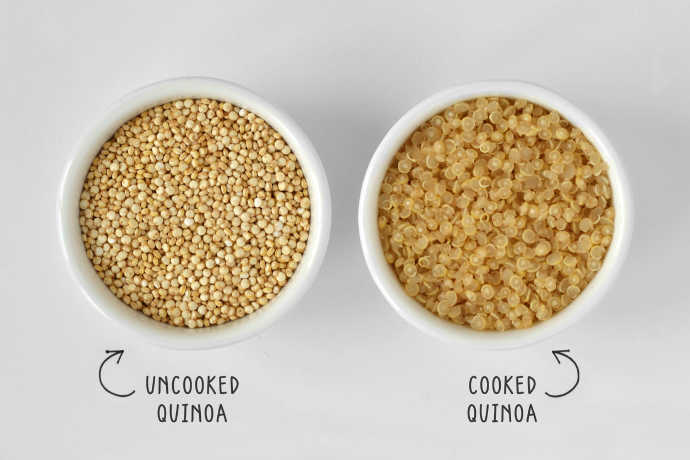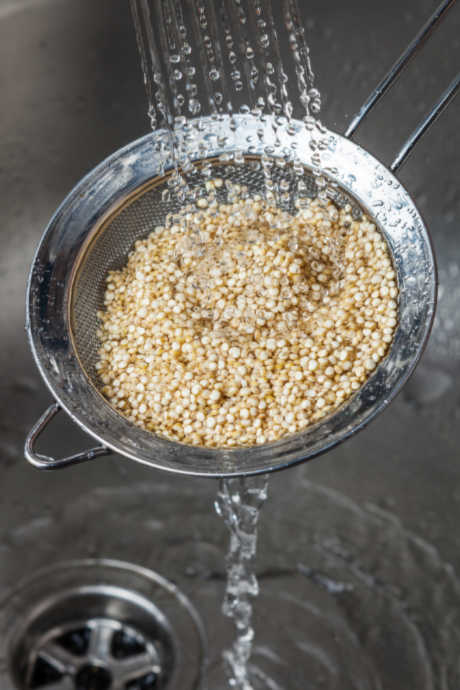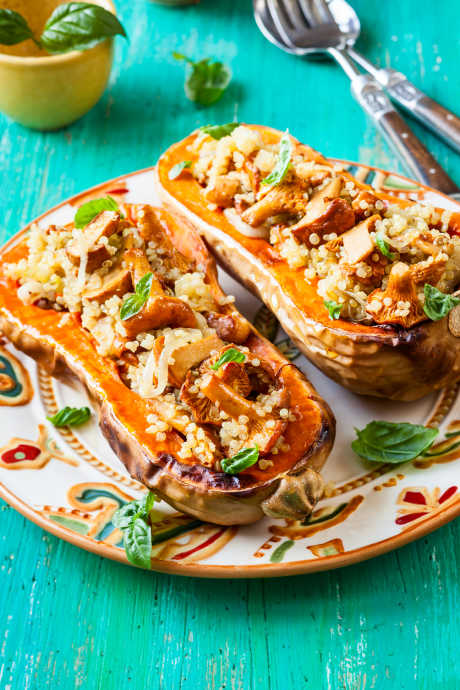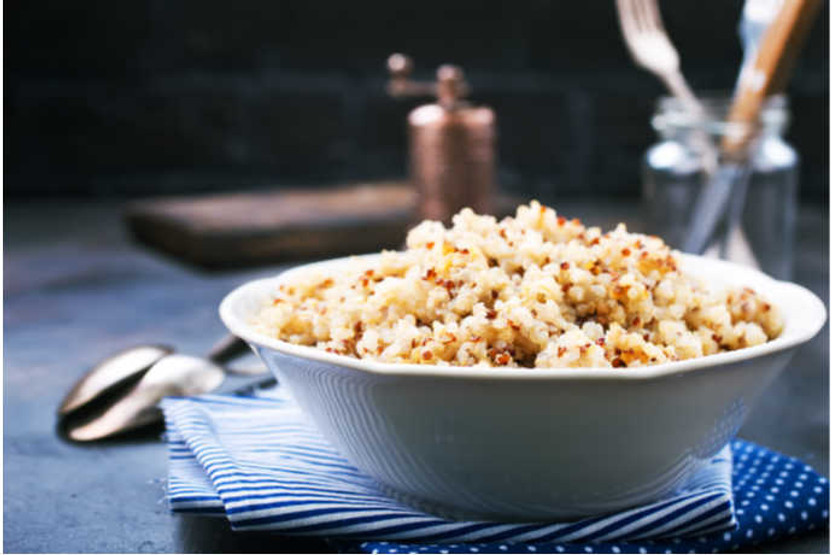Protein-Packed Quinoa Recipes
Posted by Julie on Jan 21st 2019
We’re doing our best to help your new year get off to a thrifty and healthful start, with simple meal planning tips and recipes for homemade basics like chicken stock and salad dressing. Today’s post is all about how much bang for your buck you can get from quinoa.
If you’re already a fan of quinoa, you know how versatile and nutritious it is. This gluten-free seed can be a great addition to your pantry. Quinoa pairs well with a wide range of foods, and quinoa recipes are a smart way to add fiber and protein to your diet.
How To Cook Quinoa
We’ve never had any trouble cooking quinoa, but based on our research, it seems to have been a challenge for others. If you’ve tried following the directions on the package, but ended up with disappointing results, check out these tips we found.
The proper ratio of liquid to quinoa is two parts to one part. For every cup of quinoa, use two cups of liquid. Water is fine, or you can use vegetable or chicken stock, depending on whether you’re making a vegetarian recipe.
Rinse your quinoa using a fine mesh strainer. The holes in most pasta colanders are too big, and the tiny quinoa seeds will wash right through them. We’ll cover the need for rinsing in greater detail in the next section.

Quinoa is most often cooked on the stovetop in a saucepan. A two-quart saucepan will be more than adequate. Add your rinsed quinoa to your liquid, and then bring it to a boil. No need to boil before adding the quinoa.
Bon Appetit recommends covering your saucepan when it reaches a boil, and then reducing the heat to a simmer. Once the quinoa is tender, drain it with the same fine mesh strainer you used for rinsing. Put the drained quinoa back in the saucepan — off the heat — and cover it. Let it sit for about fifteen minutes, and then fluff it with a fork.
However, we’ve always cooked quinoa the way Kate describes in her post on Cookie and Kate. Instead of covering the quinoa as it simmers, leave the lid off. Once the liquid is absorbed, remove the saucepan from the burner and cover it. As above, let it sit for several minutes, and then fluff it with a fork. The difference here is that more moisture evaporates during cooking, so there’s no need to drain your quinoa.
You can also cook quinoa using a rice cooker. Use the same proportions of quinoa and liquid, and add them to the bowl of your rice cooker. Fluff with a fork once the cooking cycle is complete.
Do I Really Have To Rinse Quinoa?
Short answer: No. But you still might want to.
Many well-respected sources, including The Kitchn and Epicurious, say rinsing quinoa isn’t necessary. It’s annoying to pour quinoa into a fine mesh strainer and then scrape the wet seeds out of it again. You can’t toast quinoa after rinsing it, unless you take the time to let it dry again. Many varieties of quinoa are pre-rinsed.

But Bon Appetit advocates for rinsing quinoa, and we agree with them. Quinoa seeds are coated with saponins, a substance which deters birds from eating them and can impart a bitter flavor if it’s not rinsed away before cooking. In fact, saponins can cause stomach upset.
When it comes to cooking, we like to err on the side of cleanliness and preventing any adverse reactions. Rinse your quinoa and save yourself a stomachache.
What To Make With Quinoa
People often think of quinoa as they might think of grains like rice, but we think you can do even more with quinoa. Below, find six brilliant ways to add quinoa to recipes in your regular rotation, along with suggestions for new recipes to try.
1. Soup
Add quinoa to brothy soups to make them more substantial. If you’re adding it to a recipe that doesn’t specifically call for quinoa, cook the quinoa first so it doesn’t soak up too much broth and throw off the proportions of your dish. You can even serve quinoa on the side so people can add as much or as little as they like.
Recipe to try: Slow Cooker Quinoa Chicken Kale Soup from Cooking Classy
2. Salad
Quinoa also goes well with salads; toss it with the greens and the other ingredients. This is a prime example of why it’s important to ensure your cooked quinoa is fluffy, not soggy. Nobody likes a wet salad. Some salads are primarily quinoa, while others incorporate quinoa like any other add-in such as cheese, nuts, or seeds.
Recipe to try: Sun Dried Tomato Spinach Quinoa Salad from Cookie and Kate

3. Chili
We wrote about how lentils can help give chili more substance, especially if you’re trying to reduce the amount of meat in your diet. Quinoa can do the same thing for chili. Cook it separately and stir it into your favorite recipe; it goes well with both tomato-based meat chili recipes and white chicken chili recipes. Or try a chili recipe that includes quinoa — dry or pre-cooked — in the ingredient list.
Recipe to try: Quinoa Black Bean Chili from Jessica in the Kitchen
4. Breading
Cooked quinoa can even be used as breading for chicken or fish. Cook the quinoa first, and set it aside. Dredge each piece of meat in flour, then egg, and then cooked quinoa. This idea was new to us, but we’re curious to see how it turns out. Such a smart way to add protein and fiber to kid-friendly foods.
Recipe to try: Quinoa Chicken Parmesan from Damn Delicious
5. Stuffed Veggies
Instead of stuffing peppers or squash with rice, use cooked quinoa. With more fiber and protein than rice, quinoa can make stuffed veggies a satisfying vegetarian meal. You can use a recipe that calls for quinoa, or just swap out the rice in your favorite stuffed pepper recipe.
Recipe to try: Quinoa Black Bean Stuffed Peppers from Pinch of Yum

6. Bowls
Substitute cooked quinoa for noodles or rice in Mexican, Indian, or Thai bowls. While quinoa has its own flavor, it’s mild enough that it won’t compete with the spices in your favorite bowl. Or try one of the many delicious bowl recipes out there featuring quinoa.
Recipe to try: Thai Quinoa Bowl from With Salt and Wit
 Free shipping over $49
Free shipping over $49










